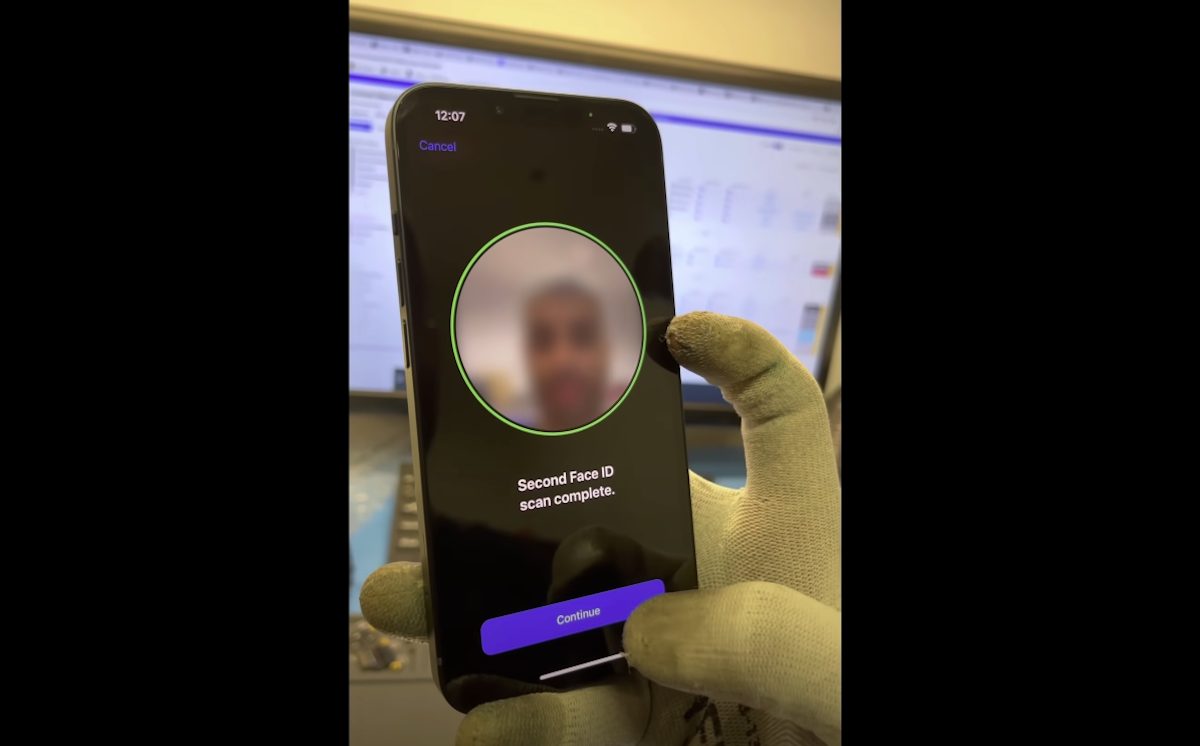It was recently reported that Face ID on iPhone 13 does not work if the screen is replaced by a third-party screen component. This had serious concerns from the community as it affected their right to repair. However, a new video has now appeared that shows that it is possible to replace the iPhone 13 screen without breaking Face ID but the process is not simple.

Face ID not working after screen replacement on iPhone 13 is a bug
As found by 9to5Mac, iCorrect, a third-party repair shop in the UK, explains why Face ID is disabled on iPhone 13 when a third-party screen replacement is installed. The screen microchip that connects the screen to the iPhone not only handles digital touch input, it also features various other features such as True Tone, a ROM for non-genuine device alerts, and also communicates with Face ID. This is not a deterrent towards third-party screen replacement or an attack on the Right to Repair movement though.
iCorrect dives deep into the Right to Repair issue and shares its perspective that Apple’s complicated screen technology is created to discourage non-genuine aftermarket parts. As iPhones are manufactured in China, there is a high possibility that these parts can be reverse engineered to create cheaper alternatives that do not have the same high quality that one expects. This is why parts are serialized and have to be checked if they are genuine.
“In my opinion, and something which I can’t comment on for the whole industry, is that this is not a fight with third party repair, this is Apple’s fight with China. We as consumers and repairers are just caught in the middle. Apple designs beautiful technology outside and in, they have it produced in China, who then disassemble the technology and manufacture alternative parts. Apple is using their own genius against the Chinese by blocking aftermarket parts. Unfortunately it also means that they also block the usage of their own parts. That genius by big tech manufacturers can be seen as control through serialisation of parts as discussed today.
This move to disable Face ID was originally seen as a checkmate move by Apple, but today I’m happy to be reporting that this is only check.“
An example of this can be the W1 chip in AirPods. It has already been replicated by third parties and is easily found in third-party AirPods clones which are then sold as genuine products. Users only find out that these are fake products once they run into issues. Perhaps the restrictions on iPhone components are to avoid such a situation.
For now, iPhone 13 only disables Face ID as a check but iCorrect believes this is a bug in iOS 15 and the company will likely fix this patch.
Moving the original screen IC from one original screen to another keeps the communication between the iPhone and the biometrics with perfect functionality of Face ID in iOS15. We do expect Apple to patch this bug in this communication between the microchips.
iCorrect have also created a video of their repair process: